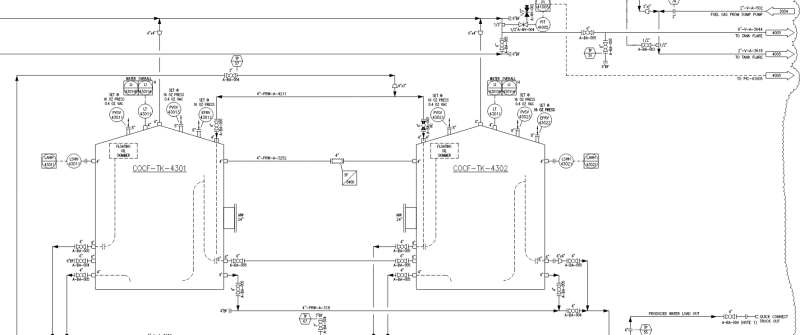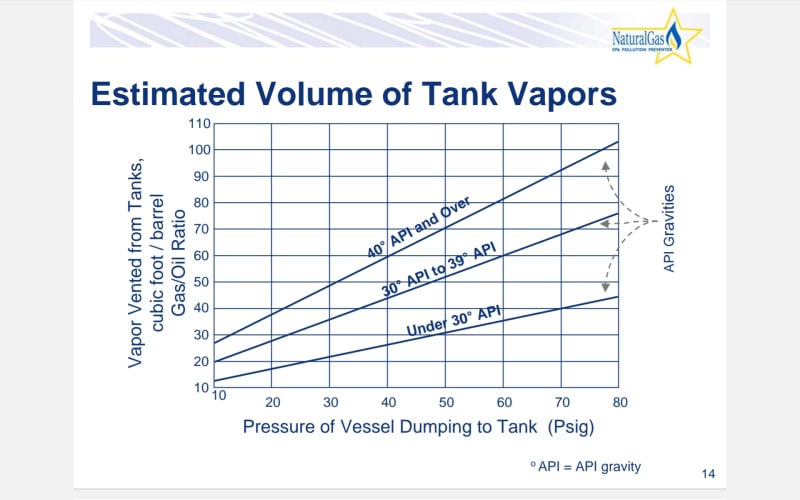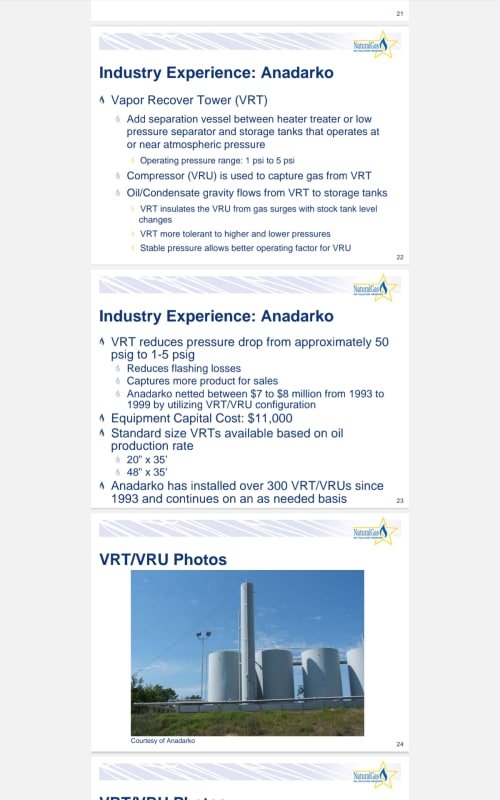@georgeverghese
I think you are confusing refinery RV-flare connection vs. wellsite field storage tanks.... For field applications, the tanks' RVs always vent to air (at least what I've seen). I've seen some refinery P&ID's that connect the RV discharge side to flare, but that's not how it works at oil field well sites.
1) Tanks have multiple outlets. Let's say the tank has 4 gas outlets joints. Usually only one of them has a piping that goes to either flare or VRUs. And for the other 3 joints, 1~3 PVSV and EPRV are installed that vent to air. These relief & safety valve discharge side has no connected piping so they are vented. The other remaining joints are plugged
2) In other setups, for each tank, out of 4 gas outlet joints, 3 of them are plugged. Only the main gas outlet is piped, and all tanks share a common gas outlet pipeline. At the end of the common gas outlet pipeline branching off with T-connection, there's one shared PRV or PSV that vents to air.
3) The destination of the main gas outlet have an option to go to either VRU or flare.
The fact that the RVs cannot handle backpressure from the flares (I don't fully understand how backpressure affects RV btw, if you could explain that would be great) are irrelevant for wellsite storage tank applications because the RVs aren't connected to flares. It's only the main gas outlet that's connected to VRU and flare. Both the flare & VRU serves as a primary "relief" point for the tanks. Assuming a tank vapor recovery with tank rated at 16oz (1 psig), the VRU suction would be set at 4~8oz, and the flare back pressure regulator will be set slightly higher than that, so maybe 10oz (but below the 12oz PRV setpoint, and 14oz thief hatch setpoint). I know this because I work at a VRU company.
The flash gas from the tanks will preferentially flow into VRU first, and if the VRU can't handle the gas volume coming in due to blowby event you mentioned (if VRU is properly sized for extra operating margin, it should be able to handle some extra gas), VRU will start accumulating back pressure and the gas will now flow into the flare line. If for some reason both VRU and flare is not operating properly, than the tanks have their own independent PRV and thief hatch that vents to air. This is a pretty common set up at wellsite when it comes to VRU & Flare combo.
So the RVs and tanks being unable to handle the blowby scenario from HT is out of picture. The gas from tanks can for sure flow into VRU and flare. If both fail, the safety valves will vent to air.
I still don't see a convincing reason to use VRT.
+ The attached image is a P&ID of wellsite atmospheric oil tank. The gas outlet in the middle of each tank goes to flare line. You can see that it has to PRV attached to them. But on the left and right of the middle gas line, there are multiple relief valves that vent to air.





